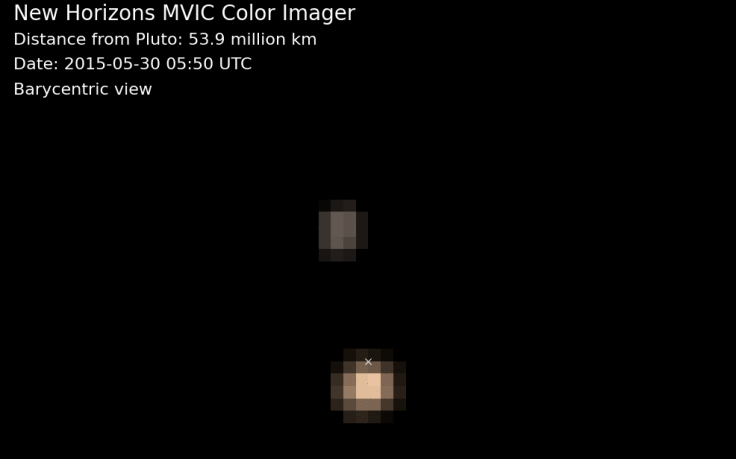NASA's New Horizons Spies Pluto And Charon In 'Near-True Color'

Even through the most powerful Earth-based and orbital telescopes, Pluto, which lies at a distance of about 2.6 billion miles from Earth at its closest approach, has never been visible as much more than a tiny, pixelated blob. Given its distance, scientists have only been able to make informed guesses about the color of its surface and that of its moon Charon.
Now, with just three weeks left for its historic flyby, NASA’s New Horizons space probe has offered scientists the first “near-true color” images of the distant worlds.
“It’s exciting to see Pluto and Charon in motion and in color,” New Horizons Principal Investigator Alan Stern from the Southwest Research Institute (SwRI), Boulder, Colorado, said in a statement released over the weekend. Although the images are still just blobs of pixels, they are clear enough to show that Pluto and Charon have different colors.
“Pluto is beige-orange, while Charon is grey. Exactly why they are so different is the subject of debate,” Stern added.
The near-true color movies, released days before the spacecraft’s closest approach to the icy dwarf planet, were assembled from images made in three colors -- blue, red and near-infrared -- taken on nine different occasions between May 29 and June 3.
Pluto -- one of the largest known bodies in the Kuiper belt -- has five known moons. Its largest moon Charon, along with Pluto, constitutes what is sometimes called a “double planet,” as the two appear to orbit each other around a common center of gravity. In one of the videos released by NASA, it can be seen that the center is much closer to Pluto due to the planet’s larger mass.
Given its distance from the sun, Pluto, which was demoted from the position of a planet in 2006, is shrouded in darkness. At its average distance, sunlight takes about 5.5 hours to reach the dwarf planet, and for years, astronomers have struggled to discern features on its surface.
“Color observations are going to get much, much better, eventually resolving the surfaces of Charon and Pluto at scales of just kilometers,” Cathy Olkin, New Horizons deputy project scientist from SwRI, said in the statement. “This will help us unravel the nature of their surfaces and the way volatiles transport around their surfaces.”
© Copyright IBTimes 2025. All rights reserved.






















